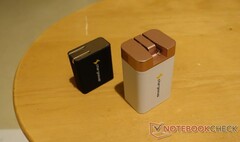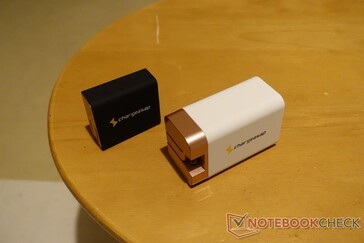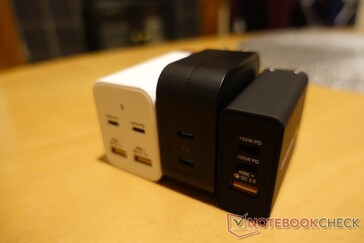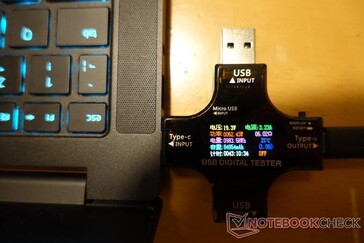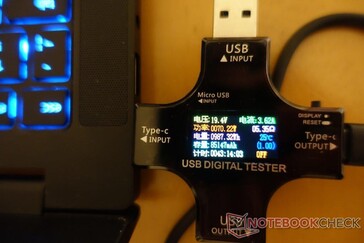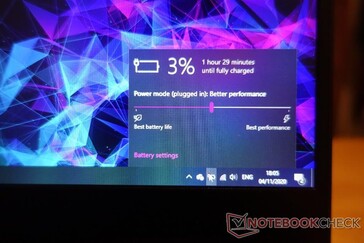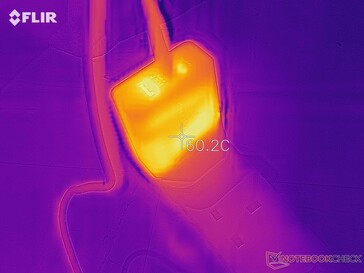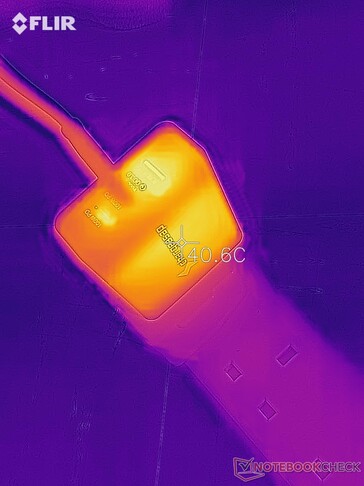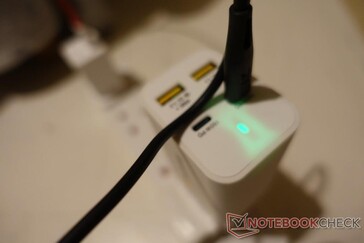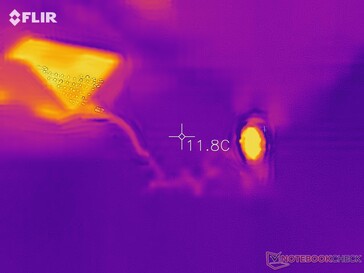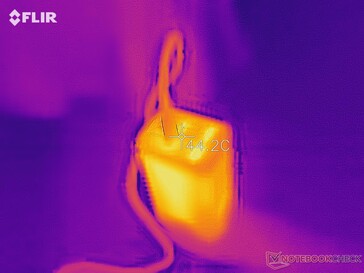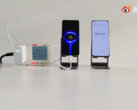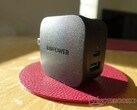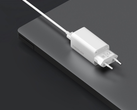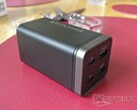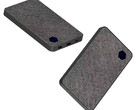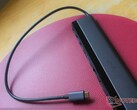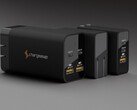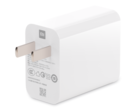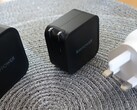Chargeasap is a start-up that has based its recent success on crowdfunded campaigns for power accessories with state-of-the-art specs. The latest example of this is the Omega GaN wall-wart, which comes in 100- and 200-watt (W) SKUs. Both of them have two USB type C ports rated for an impressive 100W USB-PD rate. However, only the larger variant is rated to charge two 100W devices at the same time.
Nevertheless, the smaller version may be attractive to some due to its size. Its footprint is depicted as fitting within the confines of a credit card, even though it is touted to do the same job as the full power brick of, say, a Razer Blade Stealth. Looks like I’ll be able to test that out with these review units for sure.
First Impressions
Admittedly, there is not much in the way of initial assessment, as I seem to have been equipped with pre-production units that came without formal packaging, not to speak of the multi-region adapters mentioned on its Indiegogo campaign – or anything like CE/RoHS markings either. I can only hope retail/post-campaign unboxings go better for its buyers and backers.
The 100W Omega does indeed live up to its hype as far as dimensions are concerned. It easily outdoes its nearest competitor in my experience – the RAVPOWER PD Pioneer 90W power brick – while also giving that accessory’s 65W and even 30W siblings a run for their money in this respect.
The 200W Omega is much larger, although it is the only one to come with a new kind of “dual direction” plug-end as a special feature. This means its US-style prongs can deploy through 180 degrees rather than 90 as usual.
This is an innovative (and exclusive: Chargeasap asserts that it is patent-pending) design; however, I have not really seen the benefit of it, mostly out of the need to use US to UK/ROI adapters with either SKU in any case.
100W Charging
As I may have mentioned, a 10th-gen Core i7-powered Razer Blade Stealth, up-to-100W power requirement and all, takes center stage when assessing the Omegas. Connecting the smaller variant did indeed result in extremely fast charging: It shot up to about 60W on my USB multimeter, even occasionally touching 70W. This was quite pleasing on the face of it, particularly as its own power supply typically gives readings of about 55W.
This unusually high rate receded to the 52-53W mark shortly thereafter and gradually sank to about 35W as the battery reached 90%. This might be due to effective regulatory circuits within the power brick.
It also started to emit a strong smell on its first bout of sustained charging – not to mention heat: Temperature testing after about 1 hour of use revealed that it easily crossed the 40 °C mark, with hotspots that hit about 60 °C. This behavior ensued as a result of light gaming (Alto’s Odyssey) during this charging session.
On repeat use during tasks such as content consumption or typing, the smell (thankfully) wore off, although it did persist in reaching those high temperatures. However, it also cooled appreciatively quickly after charging.
The smaller Chargeasap brick is rated for “only” 100W, and it showed when a Samsung Galaxy Note 10+ is plugged into its second type C port alongside the Razer ultrabook. The PC’s charging rate dropped to about 43W, while the phone charged at about 24W. On this note, it did so even if it was the only device using the 100W Omega, which was a bit disappointing.
The 200W brick was equally capable of producing these high rates with the Blade Stealth. Its temperature also rose above 40 °C after an hour of charging, although no part of it went past 55 °C.
Its ability to sustain this rate with the Razer laptop also remained constant when the Galaxy Note 10+ (which, again, charged at a standard rate) was connected to the second type-C port may indicate that it may indeed support its 200W claims.
Conclusions
Based on these tests, I can’t recommend the Chargeasap 100W Omega for use during intensive tasks such as gaming. Its FLIR camera results from that part of its testing were particularly alarming in my opinion (as was the smell, although this may have been due to its pre-production status), especially given the “high-quality GaN”, “graphene membrane” and “nano heat-sink” touted as some of its best attributes by its OEM.
Therefore, unless these issues are ironed out in "retail" units, this is not something to use on a daily basis – or in a situation where it might be the only power brick you have. (By the way, if this is the case, don’t stick it back in your bag immediately after use.)
On the other hand, I feel better about the idea of using the 200W SKU regularly. It’s impressively powerful for something of its size and, with its four ports, is also more convenient. Therefore, it’s a shame that this one loses the portability advantages of its 100W sibling.
Consumers who might be able to live with these issues can still get the Chargeasap 100W and 200W Omega at prices of US$60 and $90, respectively, on the Indiegogo page (correct at time of writing).
Disclaimer: The author of this review received these items from the OEM free of charge for the purpose of testing.
Source(s)
Own




